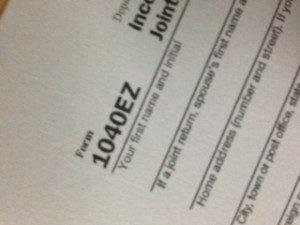 April 15, that dreaded day when taxes are due, has me thinking more about the nuts and bolts of communications planning. Looking at the pages of tax forms that need to be filled out (there is nothing EZ about this) reminds me of how so many clients feel when we talk about communications planning. So in this blog, I’m going to give you the EZ (really!) version of how to do a communications plan. I don’t mean to suggest that communications planning can be done without lots of thought, but I want to break it down into manageable pieces.
April 15, that dreaded day when taxes are due, has me thinking more about the nuts and bolts of communications planning. Looking at the pages of tax forms that need to be filled out (there is nothing EZ about this) reminds me of how so many clients feel when we talk about communications planning. So in this blog, I’m going to give you the EZ (really!) version of how to do a communications plan. I don’t mean to suggest that communications planning can be done without lots of thought, but I want to break it down into manageable pieces.
If the communications plan is a road map for reaching your target audiences – and getting them to respond – then what needs to be on the map?
Audience In map-drawing, the audience plays the role of the destination. These are the people you want to reach with your message. The audience is where you want to your messages, not just to land, but to move in. So the first part of your plan has to provide a detailed look at your audiences. And “general public” doesn’t cut it. You’ll need to break it down further (a subject for a future post).
Messages Messages are the roads and routes that connect your company or your organization to your audiences. You want your messages to be direct routes – not filled with lots of twists and turns that make it harder for your audiences to hear, understand, and engage with you.
Goals This is where we leave the map. Akin to reaching your destination with the roadmap in hand, goals are about what you want your audience to do or what you want to have happen after the message arrives. Do you want your audience to buy something, advocate on behalf of something, go somewhere, give something, understand your issue, or do something new? Be specific.
Means (Vehicles) Means are the vehicles through which you send your messages. And this comes next to last for a very good reason. When planning a trip, you would probably decide where you want to go and what you want to do before determining if you are driving, walking, flying, or going by train or boat. Unlike your favorite vacation, however, a communications effort is rarely about the journey alone. In communications planning, you’ll decide whether to use the news media, social media, face-to-face contact, email marketing, and/or a host of other tools and tactics only after you’ve defined your audience, picked the best routes, and settled on a destination.
Metrics These are the measures and benchmarks we use to determine if you’re on the right track: sending the right messages, using the right vehicles, and ultimately achieving your goals with your target audience. It’s not enough just to get there. It’s equally important to know whether you got there using the most effective messages and tactics with the wisest deployment of resources. Metrics will help assess this.
In a future blog post, we’ll dive into each of these five elements of communications planning so you can get your company or organization to your audiences.

